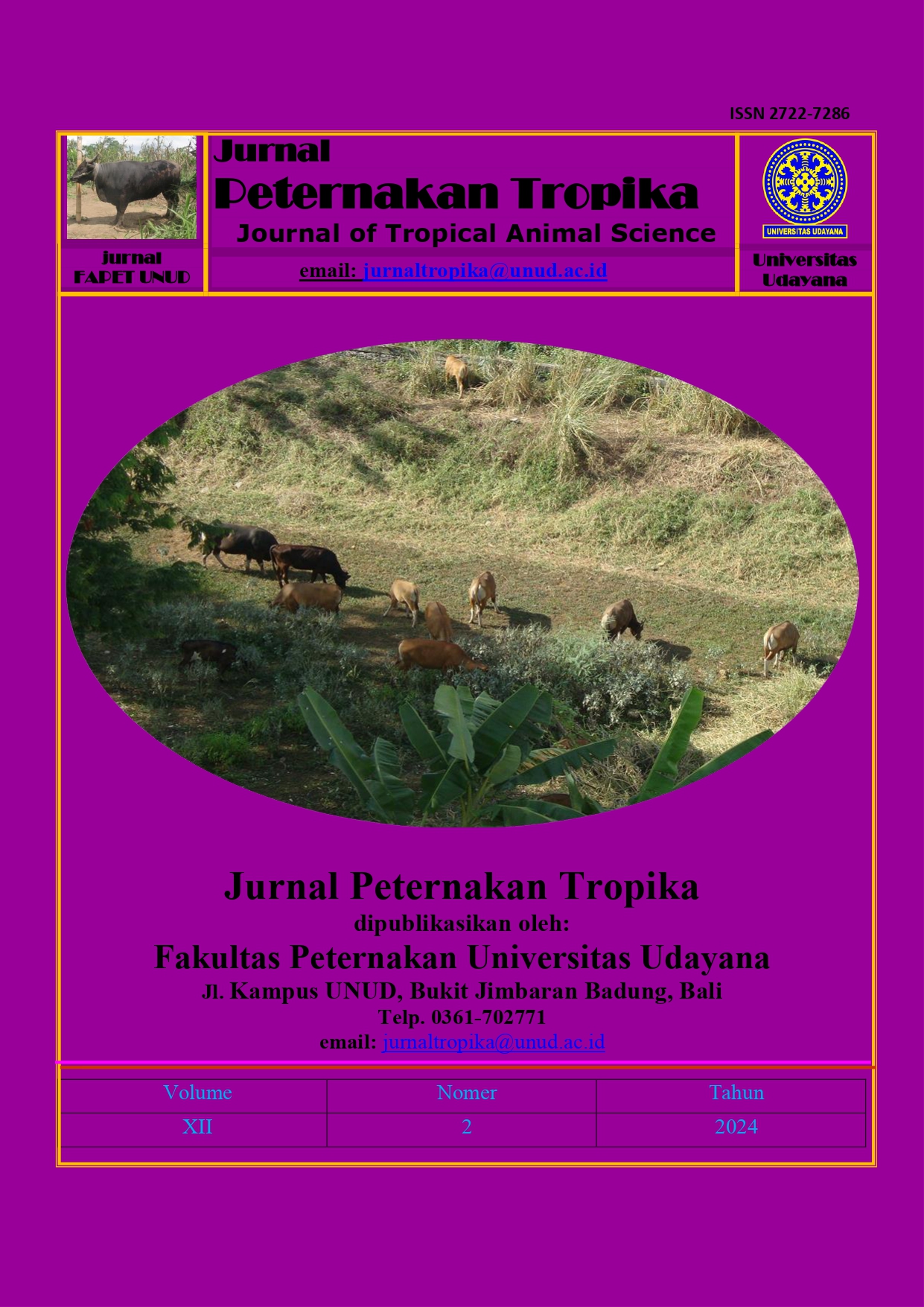THE EFFECT OF REPLACING COMMERCIAL RATION WITH FERMENTED BAKERY WASTE ON BROILER CARCASS PIECES
Abstract
This study aims to determine the effect of replacing commercial rations with fermented bakery waste on broiler carcass cracking which has been carried out at the Faculty of Animal Husbandry Farm, Udayana University, located on Jalan Raya Sesetan, Denpasar, Bali. This study was conducted for 2 months starting from December 20, 2022 to January 24, 2023 using a Submitted Date: June 7, 2023 Accepted Date: September 3, 2023 Submitted Date: November 12, 2020 Accepted Date: January 3, 2021 Editor-Reviewer Article: Eny Puspani & A.A. Pt. Putra Wibawa Editor-Reviewer Article : Ni Putu Mariani & Dsk. Pt. Mas Ari Candrawati Laili, A. S. N., Peternakan Tropika Vol. 12 No. 2 Th. 2024: 48 – 63 Page 49 completely randomized design (CRD) consisting of 5 treatments and 4 replicates. Each replicate consisted of four broilers with body weight 51.07 ± 5.53 g and unsexed. The ration treatments were P0 (broilers fed commercial ration 511 Bravo 100%); P1 (broilers fed 10% fermented bread waste as a substitute for commercial ration); P2 (broilers fed 15% fermented bread waste as a substitute for commercial ration), P3 (broilers fed 20% fermented bread waste as a substitute for commercial ration), P4 (broilers fed 25% fermented bread waste as a substitute for commercial ration). The variable observed was the percentage of carcass parts including breast, wings, upper thighs, lower thighs and back. The results showed that the replacement of commercial rations with P2, P3 and P4 fermented bread waste was real (P<0.05) in reducing the percentage of breast compared to P0 but the percentage of carcass parts of the wings, upper thighs, lower thighs and back was not significantly different (P>0.05). From the results of the study it can be concluded that the replacement of commercial rations with fermented bread waste at the level of 10% gives the same percentage of carcass cracking as the control. Giving 15-25% fermented bread waste had a significant effect in reducing the percentage of breast, but other carcass parts did not decrease.






